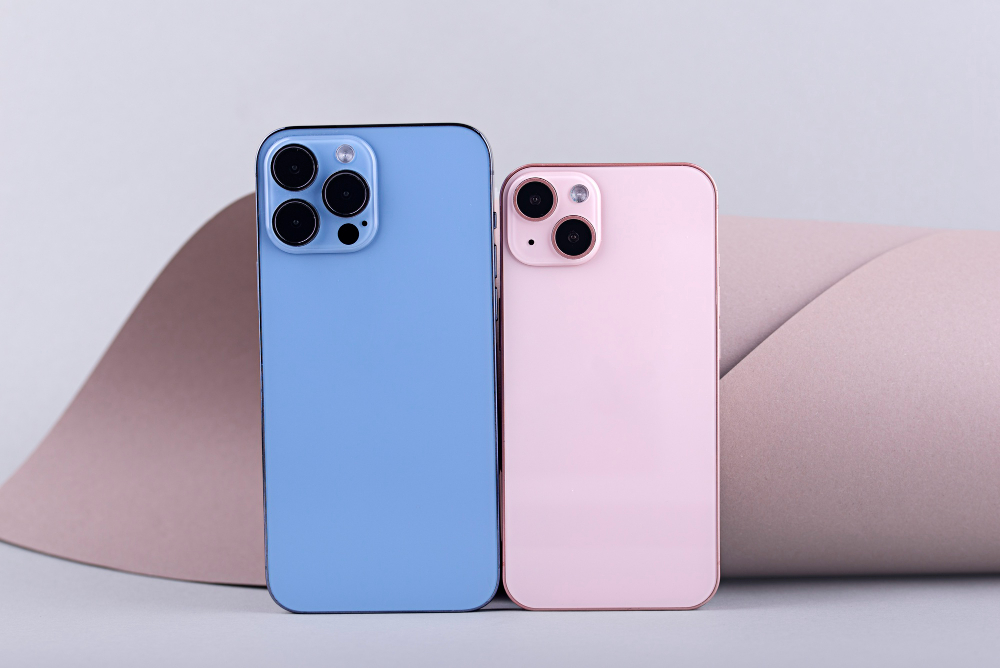The mobile phone market is changing all of the time, with consumer preferences and technological advancements driving constant change. As we move through 2024, several key trends have emerged, reflecting the priorities and behaviours of mobile phone users worldwide. This article looks into the most significant consumer trends shaping the mobile phone industry today.
- 5G Adoption and Its Impact
The rollout of 5G networks has been one of the most transformative developments in recent years. Consumers are increasingly prioritising 5G-capable devices to take advantage of faster data speeds, lower latency, and improved connectivity. This trend is not only influencing individual purchasing decisions but also driving broader market changes as manufacturers focus on producing 5G-compatible models.
With 5G becoming more widespread, consumers expect their devices to handle more data-intensive applications seamlessly. This includes everything from high-definition video streaming and mobile gaming to virtual reality (VR) and augmented reality (AR) applications. As a result, manufacturers are investing heavily in integrating robust 5G technology into their latest models, making it a standard feature rather than a premium add-on.
- Sustainability and Eco-Friendly Devices
Environmental consciousness is increasingly influencing consumer choices, and the mobile phone industry is no exception. A growing number of consumers are seeking eco-friendly devices, leading manufacturers to adopt sustainable practices. This includes using recycled materials in production, reducing plastic usage, and ensuring ethical sourcing of raw materials.
Brands like Apple and Samsung are leading the charge, with commitments to carbon neutrality and the use of recycled materials in their products. Apple’s iPhone 12 series, for example, uses 100% recycled rare earth elements in its magnets. Similarly, Samsung has introduced eco-packaging for its Galaxy series, which can be repurposed into household items.
- Foldable and Flexible Screens
Foldable phones, once a futuristic concept, are now becoming mainstream. The appeal of foldable devices lies in their versatility, offering the convenience of a compact phone with the expansive screen size of a tablet. Brands like Samsung, Huawei, and Motorola have introduced foldable models that cater to this growing interest.
Consumers are drawn to foldable phones for their ability to multitask more efficiently, with features like split-screen functionality enhancing productivity. The technology behind foldable screens continues to improve, with better durability and more refined designs, making these devices more attractive and accessible. You can compare deals on foldable phones and others online.

- Enhanced Camera Capabilities
The camera quality of mobile phones remains a top priority for consumers, driving manufacturers to push the boundaries of mobile photography. High-resolution sensors, multiple camera setups, and advanced software features are now standard in flagship models.
Consumers are particularly interested in features like night mode, AI-enhanced photography, and high optical zoom capabilities. Brands are also focusing on video recording enhancements, such as 8K video recording, stabilisation features, and professional-grade editing tools built into the device.
- Battery Life and Fast Charging
Long battery life and fast charging capabilities are critical factors for consumers when choosing a mobile phone. The demand for longer-lasting batteries is driven by the increasing use of power-intensive applications and the need for devices to support all-day use without frequent recharging.
Manufacturers are responding with innovations in battery technology and charging speeds. Fast charging solutions, such as Qualcomm’s Quick Charge and USB Power Delivery, are becoming standard. Some brands are also exploring wireless and reverse wireless charging, allowing users to charge multiple devices simultaneously.
- Artificial Intelligence and Machine Learning
AI and machine learning are playing an increasingly significant role in enhancing the mobile phone user experience. From personalised recommendations to intelligent camera features and improved voice assistants, AI integration is becoming a key selling point for new devices.
Consumers are benefiting from AI in various ways, such as optimised battery management, predictive text and typing suggestions, and enhanced security features like facial recognition and biometric authentication. As AI technology continues to evolve, its applications in mobile phones are expected to become even more sophisticated and integral to device functionality.
- Gaming-Centric Phones
The mobile gaming industry has exploded in popularity, leading to a surge in demand for gaming-centric phones. These devices are designed with features tailored to gamers, such as high-refresh-rate screens, powerful processors, and enhanced cooling systems to prevent overheating during extended gaming sessions.
Brands like ASUS, with its ROG Phone series, and Xiaomi, with the Black Shark line are catering to this niche market. These phones often come with additional accessories like game controllers and external cooling fans, providing a comprehensive gaming experience.
- Health and Wellness Features
Health and wellness have become significant considerations for mobile phone users, especially in the wake of the COVID-19 pandemic. Consumers are looking for devices that can help them monitor their health, track fitness activities, and manage stress.
Manufacturers are integrating a variety of health-focused features into their devices, such as advanced heart rate monitors, blood oxygen level sensors, and sleep tracking. The incorporation of these features is turning smartphones into essential tools for personal health management.
- Customisation and Personalisation
Consumers are increasingly seeking mobile phones that can be personalised to fit their individual needs and preferences. This trend is driving demand for customisable software interfaces, a wide range of accessories, and even bespoke hardware options.
Operating systems like Android offer extensive customisation options, allowing users to tailor the look and functionality of their devices. Additionally, brands are offering more colour choices, custom engraving, and modular components that can be swapped out to enhance the device’s capabilities.
- Augmented Reality (AR) and Virtual Reality (VR)
AR and VR technologies are gaining traction, with mobile phones serving as the primary gateway to these immersive experiences. Consumers are using AR for gaming, shopping, and navigation, while VR is becoming popular for entertainment and virtual meetings.
Manufacturers are equipping devices with the necessary sensors and processing power to support these technologies. Apps and services leveraging AR and VR are also expanding, providing more diverse and engaging content for users.
As these trends continue to develop, consumers can look forward to even more sophisticated, personalised, and powerful mobile devices in the near future.


